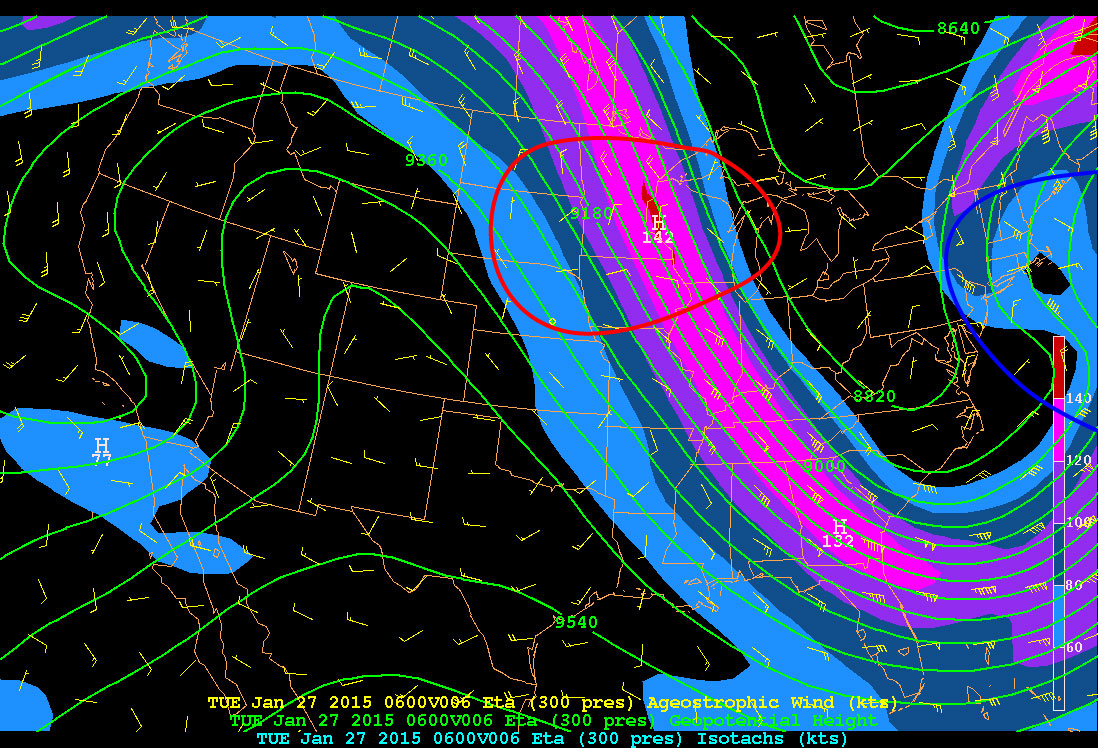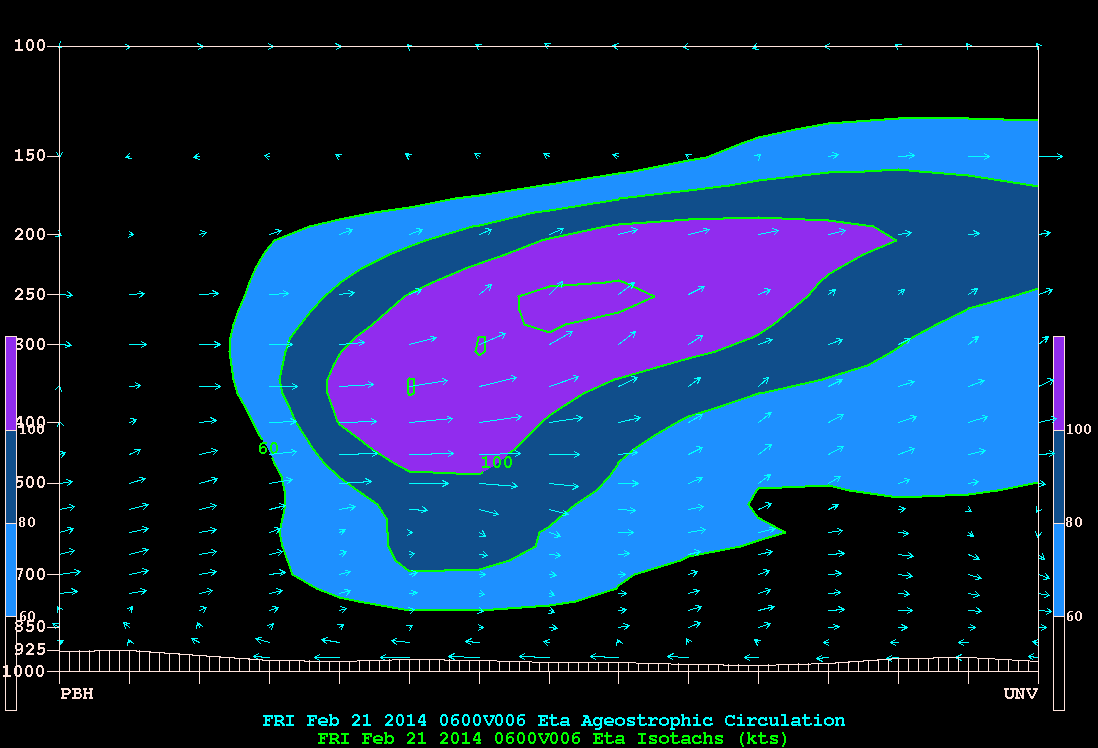Pre-Lab Activities: Identifying and Interpreting Ageostrophic Circulation
Question 1 of 4
Given the theory for ageostrophic wind patterns associated with upper-level flow curvature, sketch in some white arrows to show the direction of ageostrophic flow within the jetstream on the 300 mb map of isotachs and heights below. Then, outline any areas of convergence in red and divergence in blue. Compare your map to the solution provided by clicking “done”.
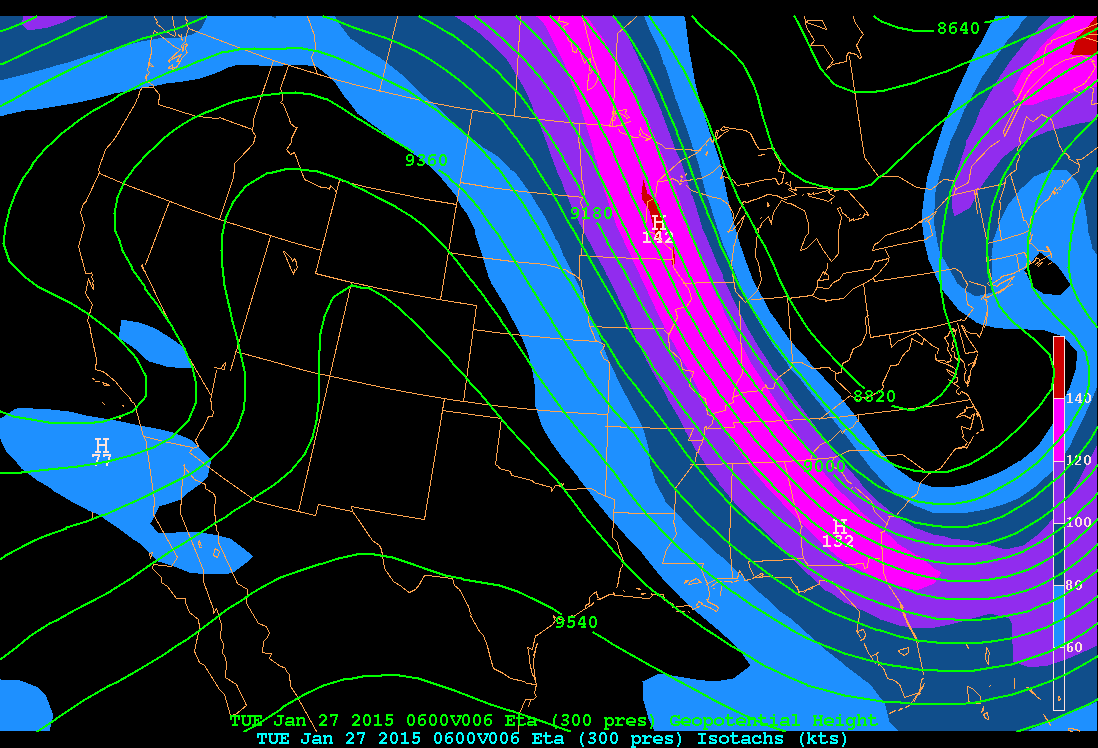
| Tool: | Tool Size: | Color: |
|---|---|---|
Much like the conceptual model of ageostrophic flow due to curvature earlier, we can see convergence of the wind barbs (yellow) on the west side of the trough and divergence on the east side. The ageostrophic wind flows upstream within the cyclonic curvature and downstream within the anticyclonic curvature - if we look carefully at the height contours, the blue area of divergence is centered upon the inflection point where the flow shifts from cyclonic to anticyclonic; the same can be said about the red area of convergence, though the inflection is not as noticeable.
Question 2 of 4
Where are the fastest ageostrophic winds located in the previous map?
The correct answer is c.
Ageostrophic barbs of 100 knots exist in the base of the trough - much higher than on either side of the trough axis. The base is where curvature is strongest and wind speeds are strong.
This example fits the conceptual model of ageostrophic flow and curvature fairly well, and also highlighted the relative magnitude of ageostrophic flow due to curvature versus ageostrophic flow due to jet streaks - you'll notice the wind barbs along the streak on the western side of the trough did not indicate much in the way of transverse circulation around the streak.
Let's take a look at a few examples of noticeable transverse circulations around jet streaks.
Here we can see a much more zonal jet streak where the ageostrophic vectors flow to the north across the entrance region and to the south/southeast across the exit region, similar to the jet streak conceptual model.
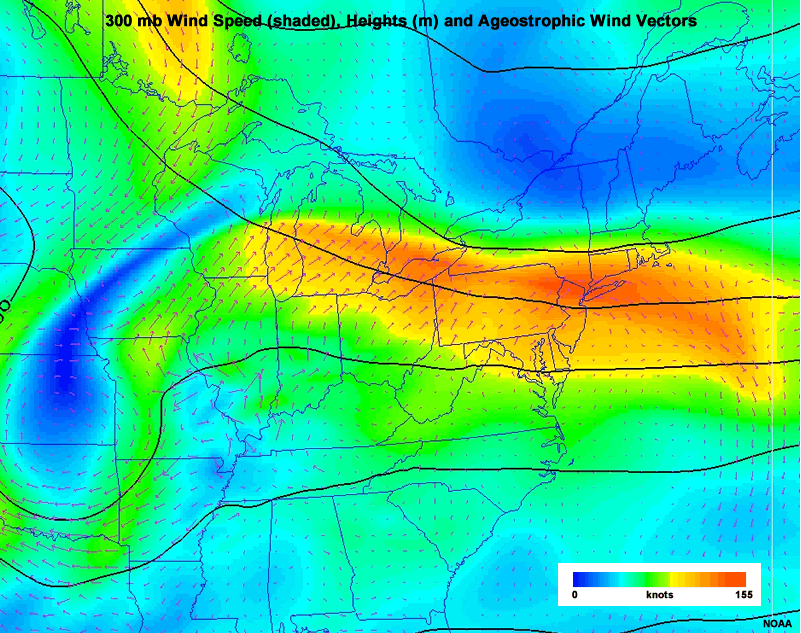
This effect is evident regularly in straight jetstreaks in plan view, but can be partially obscured when the streak is nestled within a moderately or strongly curved trough or ridge. Cross-sections can help us capture the transverse circulation placement and magnitude.
Typically, cross sections of isotachs and ageostrophic flow will resemble something like the conceptual entrance and exit regions below.
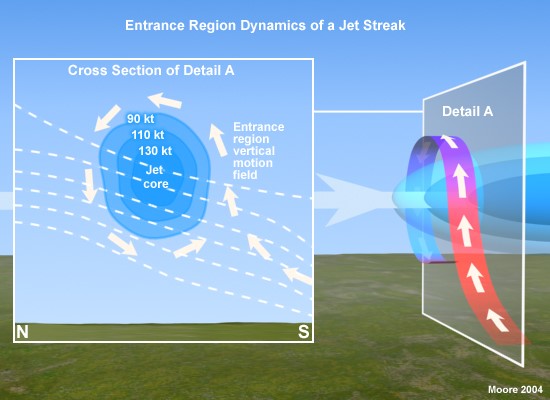
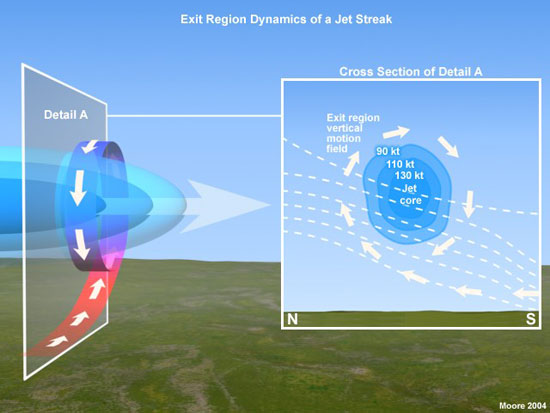
Question 3 of 4
Examine the cross section of isotachs, potential temperature and ageostrophic circulation vectors below. Which location within a jet streak does it represent?
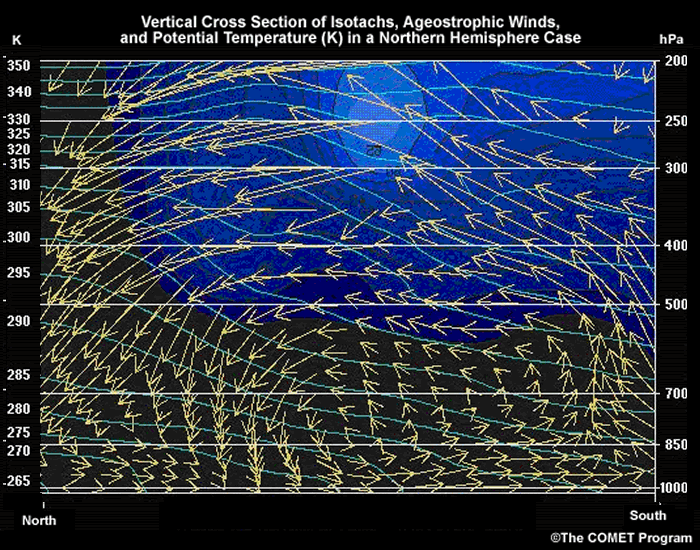
The correct answer is a.
Based on the conceptual model and inertial-advective wind theory above, we know this cross section was taken from the entrance region, since warm air on the right (south) is rising into a thermally direct circulation and then subsiding on the left (north) side.
Ageostrophic vectors across a moderately strong to strong exit region will look similar, except the direction of circulation is reversed and it is thermally indirect.
The plan view image below shows the location at which an exit-region cross section was created. Use it to help you answer the question below.
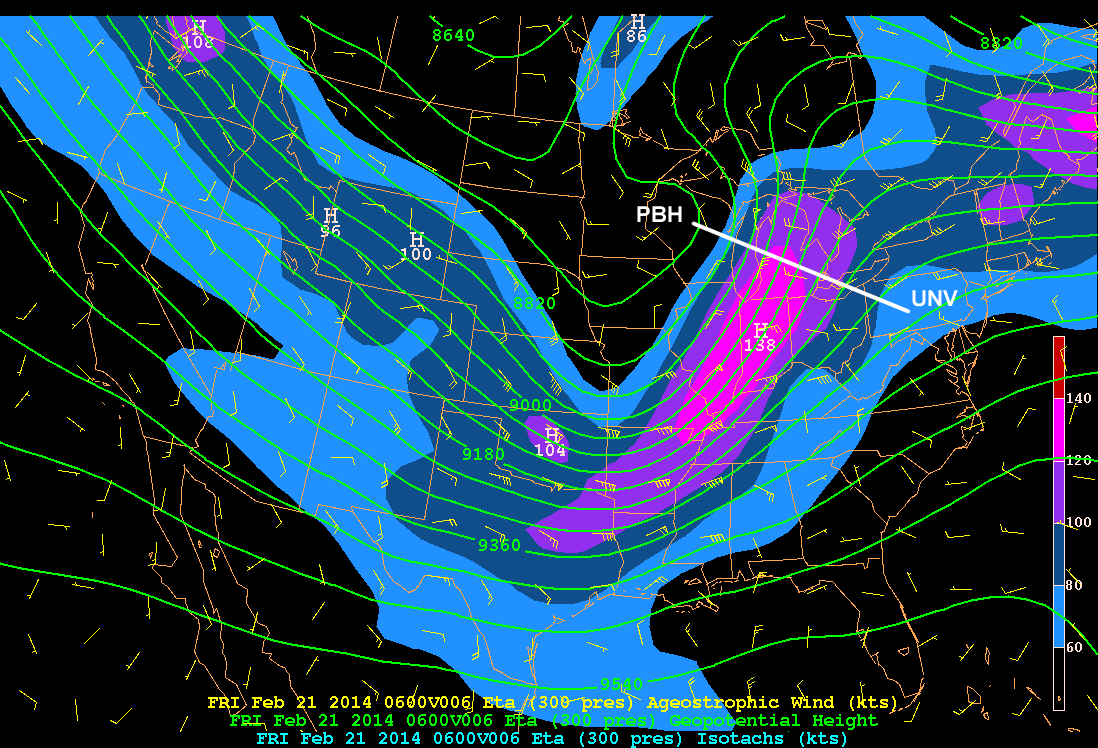
Question 4 of 4
This is the exit region cross section of isotachs from the location above. Use the white pen to draw in a couple handfuls of arrows that illustrate what the ageostrophic circulation would look like. Click done to see the solution image and discussion.
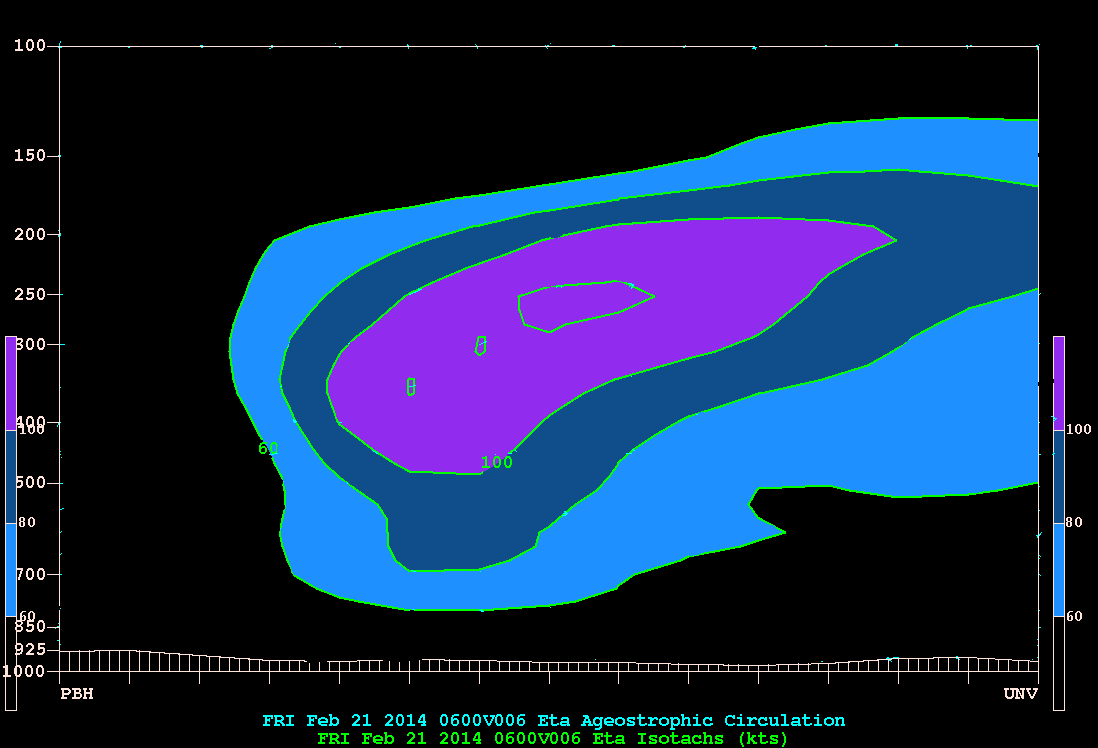
| Tool: | Tool Size: | Color: |
|---|---|---|
Here we can see shallow southeasterly ageostrophic flow near the surface ascending into a thermally direct circulation within the exit region of this broad and deep jet streak. This fits the conceptual model, though because of this jet's broadness and depth, the circulation is not as organized as the entrance region example we saw earlier.
Additionally, If we go back and take a look at the plan view ageostrophic wind barbs, we can see that there is some degree of ageostrophic flow not just upstream in the cyclonically curved area as we'd expect, but also a component to the left of the wind in the entrance region and to the right of the wind in the exit region - a combination of curvature and the streak activity.
